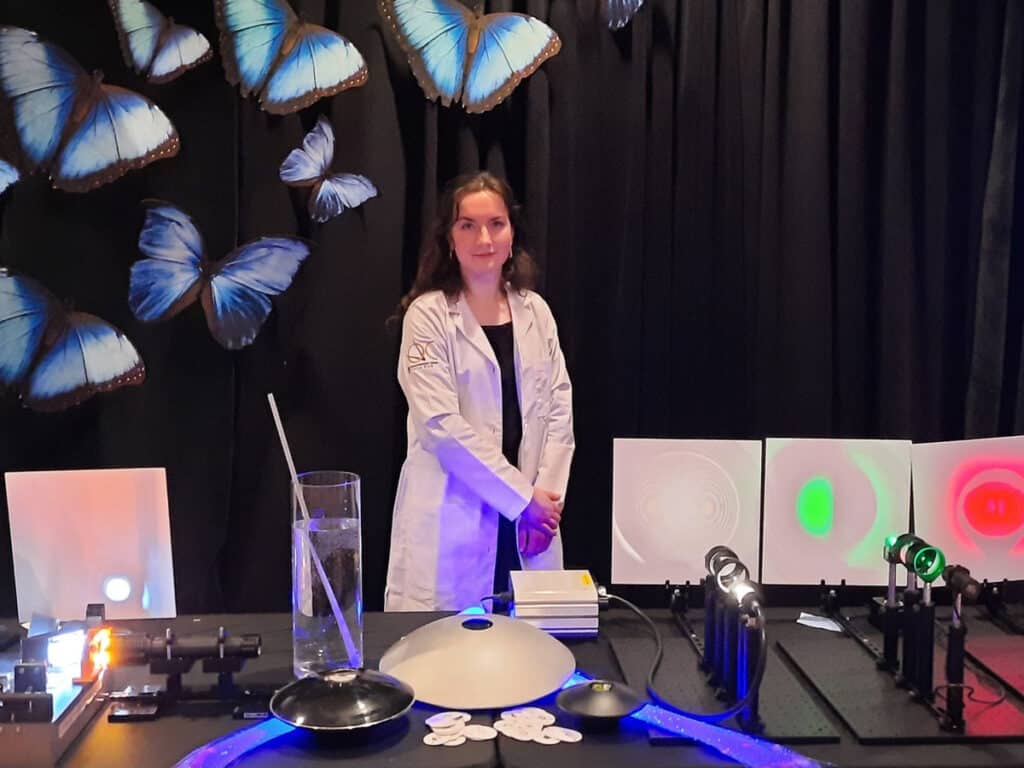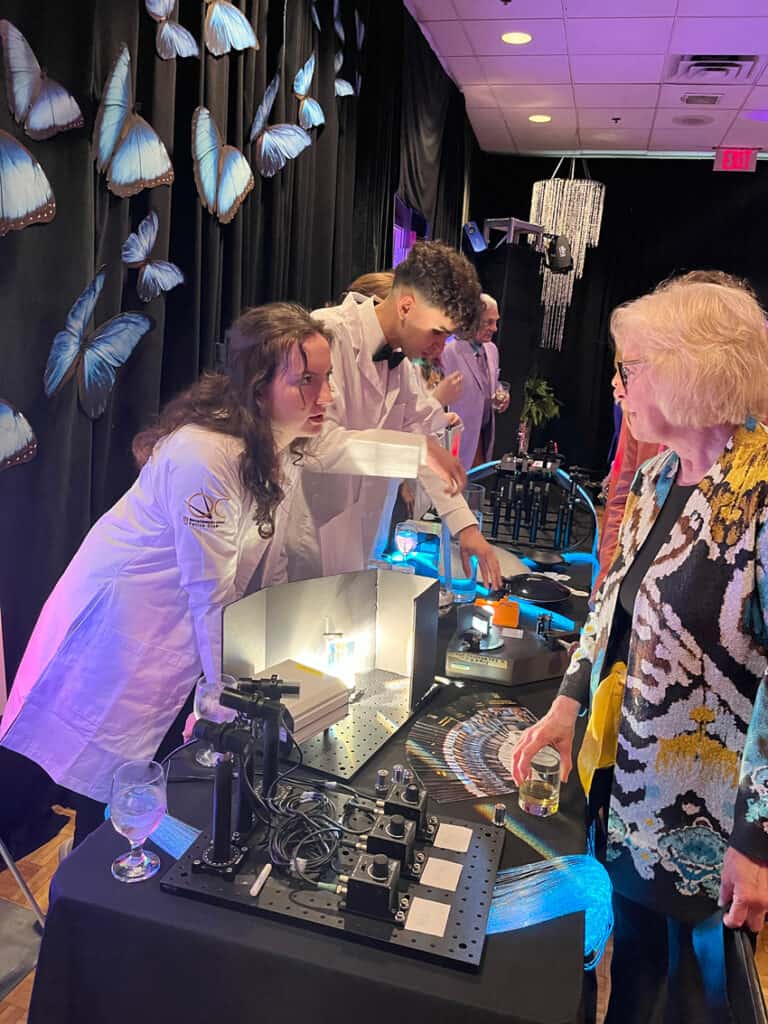William (Bill) Dykstra, a high school teacher of physics and astronomy, and his daughter Esther have some interesting dinner table conversations. “Usually about some scientific procedure,” Bill explained. “Anything that we happen to have worked on that day.” Esther added, “For example, I tell him how I learned a new technique for polishing lenses.” It’s not your typical father-daughter banter. But this duo shares a love of optics, and they both also enjoy sharing that love with others.
Bill has been interested in science for as long as he can remember and, throughout his teaching career, he has cultivated that interest with his students. Bill also teaches the class, Introduction to Optics, which is a dual-enrollment course with Monroe Community College (MCC). Two years ago, as Esther was close to finishing high school, he encouraged her to consider MCC’s Optical Systems Technology (OST) Program.
“It wasn’t a hard sell,” the proud dad said.

Esther immediately loved the hands-on nature of the classes. “We’re using the same equipment that real optics technicians use on the job – the same CNC machines, the same interferometers.” She added, “Graduates of the MCC/OST program are able to go into any optics manufacturing company with a working knowledge of the processes involved. They are job-ready on day one.”
Esther now leads the Student Optics Club at MCC and engages with fellow students of all ages about careers in optics. The OST program includes many adult learners who are returning to school to earn a one-year certificate or a two-year degree. Esther added, “We also have a lot of students who joined because of the dual-enrollment course they took in high school.” Esther plans to launch her own career in optics once she graduates from the program in May 2024.

Bill can’t help but share his daughter’s journey with his current high school students. “It comes up, absolutely,” he said. “[My students] aren’t always certain about what they want to do. Some don’t know yet if they want a four-year college experience right out of high school. But many are certain they don’t want to go into debt to pay for college. When they hear Esther’s story and learn about starting a career in optics even after just one year at a community college, they realize they have a tremendous opportunity in front of them.”
Both of the Dykstras said they enjoy seeing someone’s face light up when they realize the potential of an optics career. “Once they’ve seen the tremendous number of technologies that optics enables and that the field is growing, the horizon opens up for them. There is not a single pathway. They have choices,” Esther said.
“It’s one of those joys as a teacher when you can mold a mind that is looking for a career opportunity,” Bill added.
High School Dual-Enrollment Programs Growing
An increasing number of high school students nationwide can study optics and earn college credit through a dual-enrollment program with a community college. In the greater Rochester, NY-area alone, there are 18 high schools offering optics classes. And an impressive 28 percent of students who are enrolled at Monroe Community College’s Optical Systems Technology program took a dual-enrollment optics course while in high school.